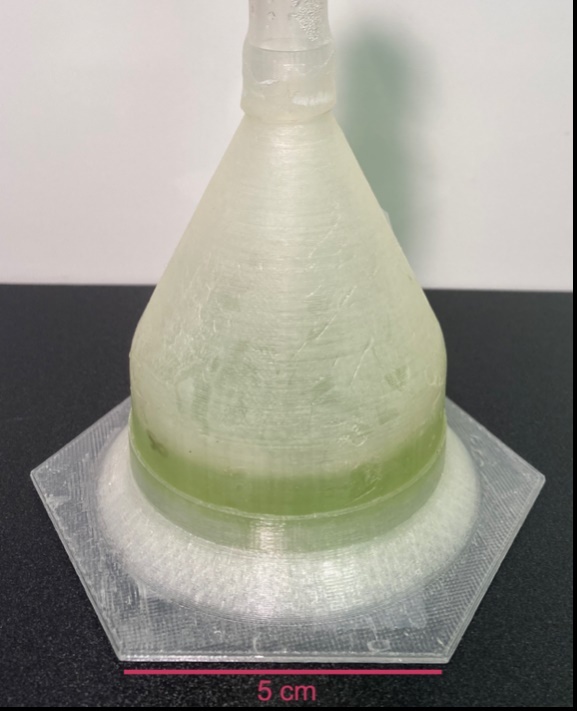4.07.2025
Scientists have developed a new bioplastic derived from green algae which could resolve major challenges in the pursuit of sending humans to live on other worlds like Mars.
Human missions to other planets will necessitate building habitats – structures for the intrepid explorers to eat, sleep, do research and engage in recreational activities. A significant drawback is that transporting the materials necessary to build such habitats would be a challenge for current spacecraft and costly.
New research published in the journal Science Advances puts forward an alternative which feels very sci fi.

Close-up of bioplastic habitat with algae growth. Credit: Wordsworth Group / Harvard SEAS.
The interdisciplinary team demonstrated a method of creating a kind of bioplastic that encourages the growth of green algae, which can then be used to produce more bioplastic.
“If you have a habitat that is composed of bioplastic, and it grows algae within it, that algae could produce more bioplastic,” says research lead Robin Wordsworth, a professor of earth and planetary sciences at Harvard University’s School of Engineering and Applied Sciences in the US.
“So you start to have a closed-loop system that can sustain itself and even grow through time.”
The structure is reminiscent of the “living ships” of science fiction like the organic starships of the Wraith in Stargate Atlantis, or the biological ships of the Gomtuu or Species 8472 in Star Trek: Next Generation and Star Trek: Voyagerrespectively.
Lab experiments recreated the atmospheric conditions of Mars where air pressure on the surface is about 170 times less than at sea level on Earth due to the very thin Martian atmosphere.
Mars’s atmosphere is also rich in carbon dioxide unlike Earth’s which is mostly nitrogen and oxygen.
These conditions don’t allow for liquid water to form on the Martian surface.
Common green alae Dunaliella tertiolecta, however, thrived in a 3D-printed growth chamber made from a bioplastic called polylactic acid.

The bioplastic blocked UV radiation while still allowing enough light through for the algae to photosynthesise. The bioplastic chamber also created a pressure gradient which allowed for water to stabilise within its walls.
The research shows that otherwise barren worlds could see organic growth which could be used to build human habitats on future space missions. In fact, Wordsworth’s team has previously done research which showed sheets of silica aerogels could be used to mimic Earth’s greenhouse warming effect to allow for biological growth on other planets. Combining the 2 pieces of research could see a sustainable extraterrestrial existence for humans in the future.
Wordsworth’s team will now attempt to show that their bioplastic habitats can be grown in a vacuum to simulate other deep space missions, such as on the Moon.
“The concept of biomaterial habitats is fundamentally interesting and can support humans living in space,” Wordsworth says. “As this type of technology develops, it’s going to have spinoff benefits for sustainability technology here on Earth as well.”
Quelle: COSMOS
